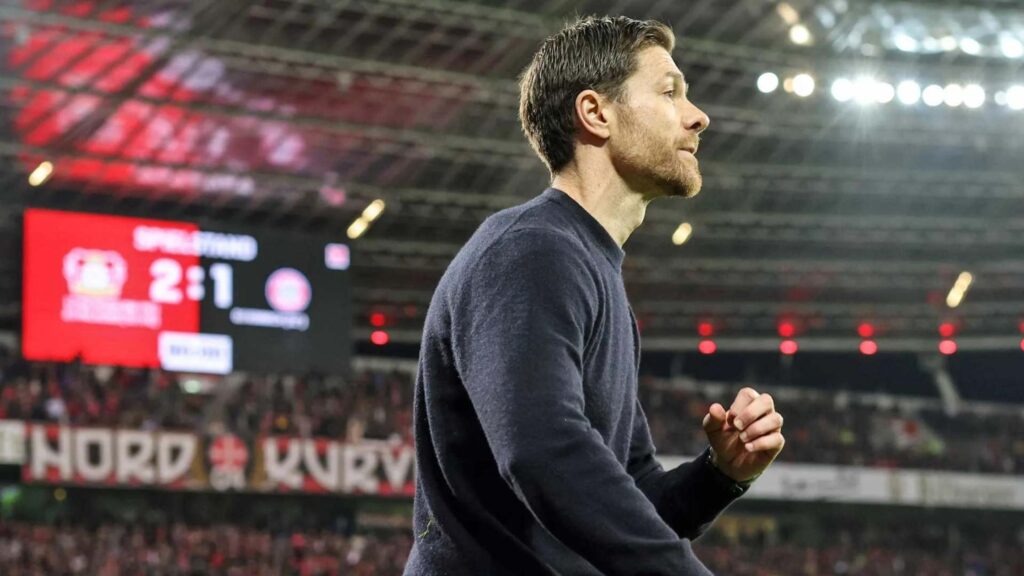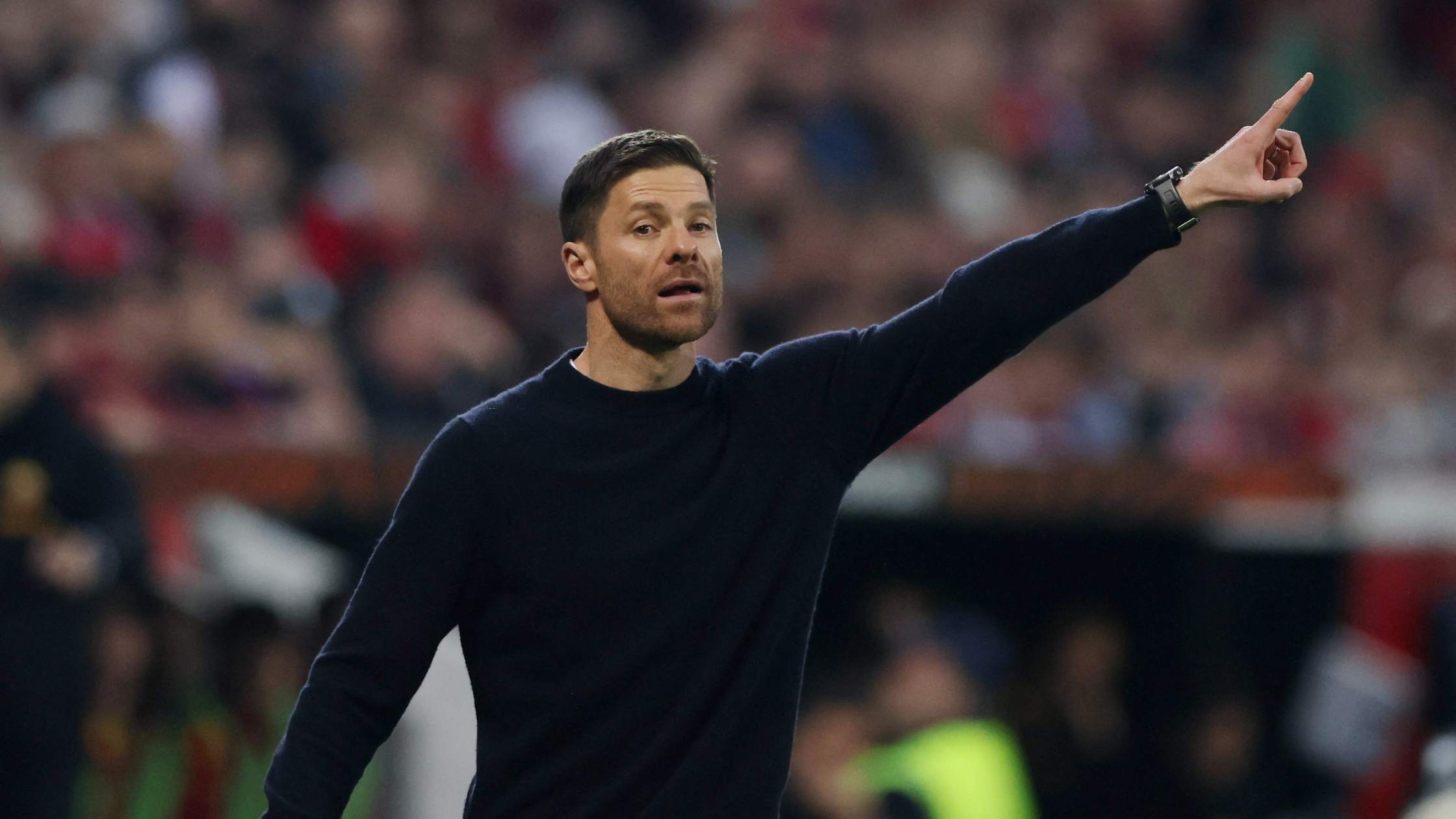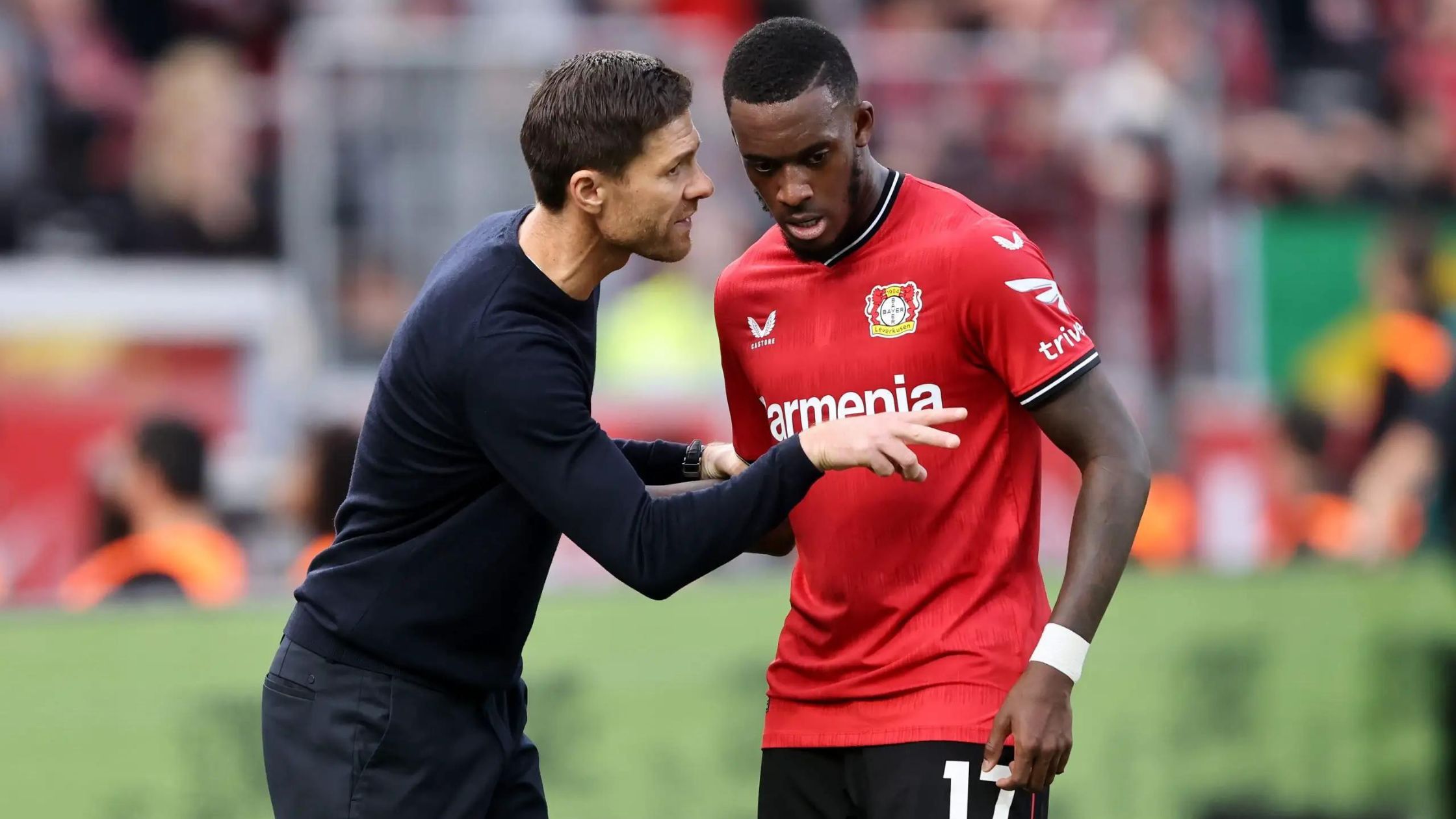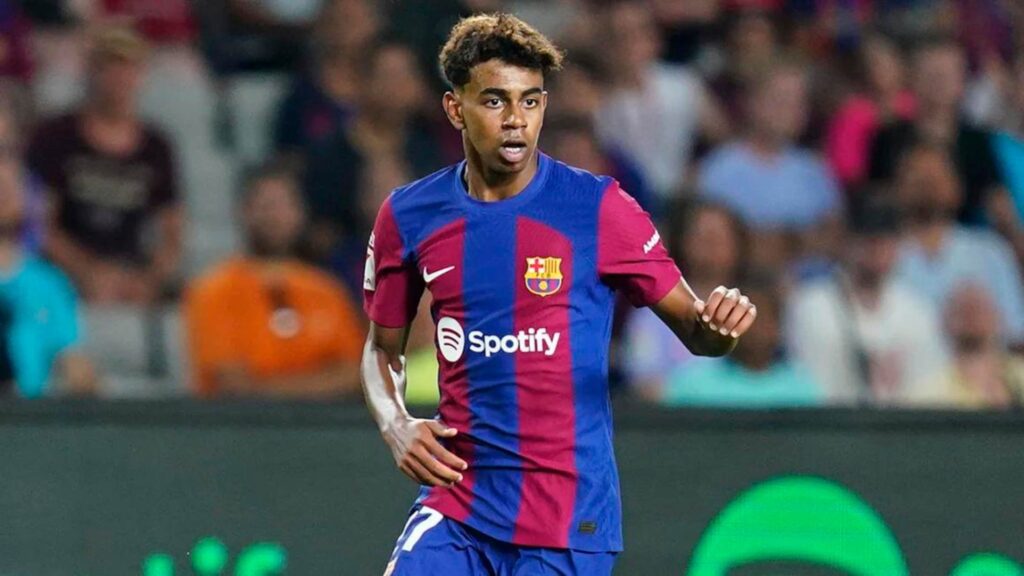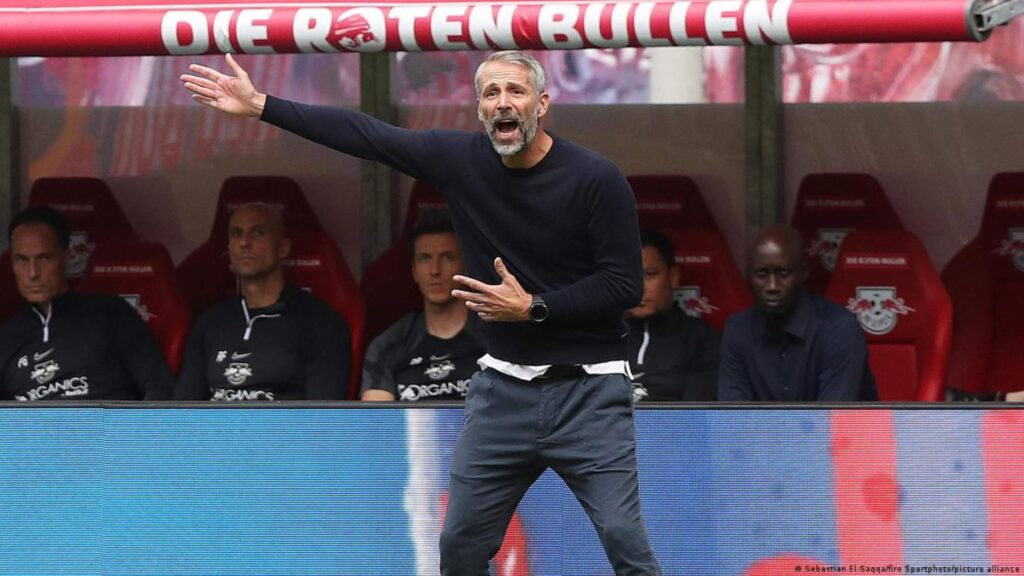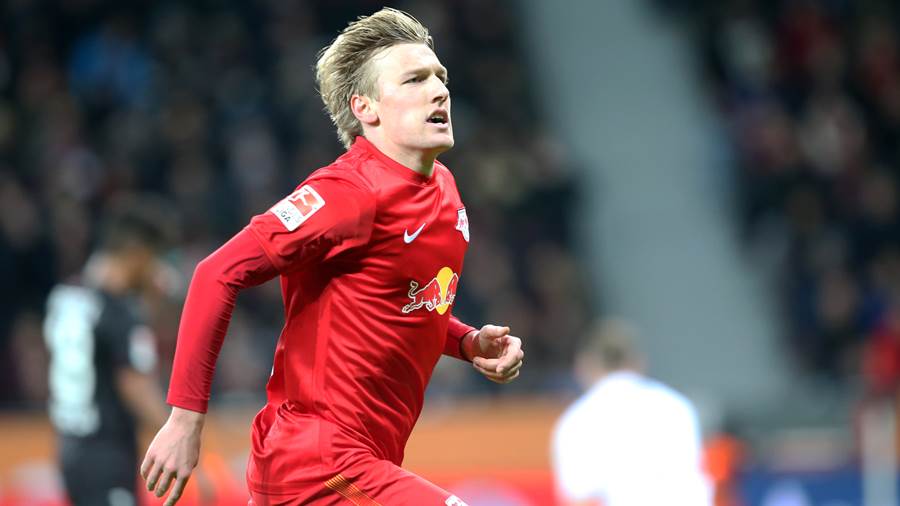Xabi Alonso is, as Jose Mourinho correctly predicted as far back as 2010, destined to become a football manager. And judging by the way that Bayer Leverkusen is disrupting the Bundesliga, the former midfielder’s tactics and knowledge could make him a world-class manager.
That’s pretty hefty praise for a relative newcomer to this role. But as his former mentor, Mourinho, spotted, Alonso has the pedigree, the drive and the intelligence to achieve a lot from the football bench. It could even be more than what he achieved in the field.
This is why today I am looking at the tactics used by Xabi Alonso to manage Bayer Leverkusen and to turn them into one of the most exciting clubs in Europe at the moment.
Xabi Alonso career before management
Xabi Alonso’s name will be familiar to the majority of today’s football fans. In fact, other than Pep Guardiola and Zinedine Zidane, no modern footballing great has made as quick of an impact in management.
Alonso already had over 100 La Liga appearances for Real Sociedad before joining Liverpool in 2004 and becoming an emblematic member of the team that famously won the Champions League in 2005.
Next, seen as one of the best defensive midfielders in the world, Xabi Alonso transferred to the world’s most prestigious club, Real Madrid. Here he won every major club distinction while in the meantime also becoming a world and European champion (twice) with the Spanish national team.
Alonso spent the final years of his career in the Bundesliga, winning three back-to-back titles with Bayern Munchen. It’s safe to say that Xabi Alonso’s resume as a player can stand beside that of anyone.
Football Philosophy
It was shortly after his retirement in 2017 that Alonso hinted at his desire to take up a career in management immediately. Many who had worked with the player, including Jose Mourinho, lauded this decision. Alonso has often been praised for his intelligence and dogged persistence.
But just what style of football would he represent as a manager?
Alonso was known as a tough, dynamic midfielder known fundamentally for his ability to stop attacks. As a manager, however, Alonso is more adventurous. There is not one single word that can describe Alonso’s tactical philosophy other than “versatility.”
His teams have tended to play a hybrid style that is designed to take advantage of the opponent’s defensive weaknesses and emphasize their own strengths. Bayer Leverkusen has earned a reputation as a high-scoring team that enjoys fast, free-flowing football.
Before that, while at Real Sociedad B, Alonso played in a 4-2-3-1 where the adaptability of his wing-backs and central forward made it different for the opposition to cope.
Tactics at Bayer 04 Leverkusen
Xabi Alonso began his management career at Real Sociedad B. From the onset, he used a dynamic tactic based on 3-4-2-1 or 4-4-2 formations.
He became manager of a struggling Bayer Leverkusen side in October 2022. Since then, him and the club have carefully made transfers that adhere to Alonso’s tactical vision. The quick-paced, strong finishers Nathan Tella and Victor Boniface were big money transfers. So was that of the tough, dependable Granit Xhaka, who arrived from Arsenal this summer.
What does Alonso hope to achieve? At their best, Bayer is a team that is deadly on the counter-attack but also capable of managing possession against big-name clubs. The team likes to invite pressure, breaking at speed, but can also allow the skill of a player like Florian Wirtz to become an essential factor in the way that the team expresses itself.
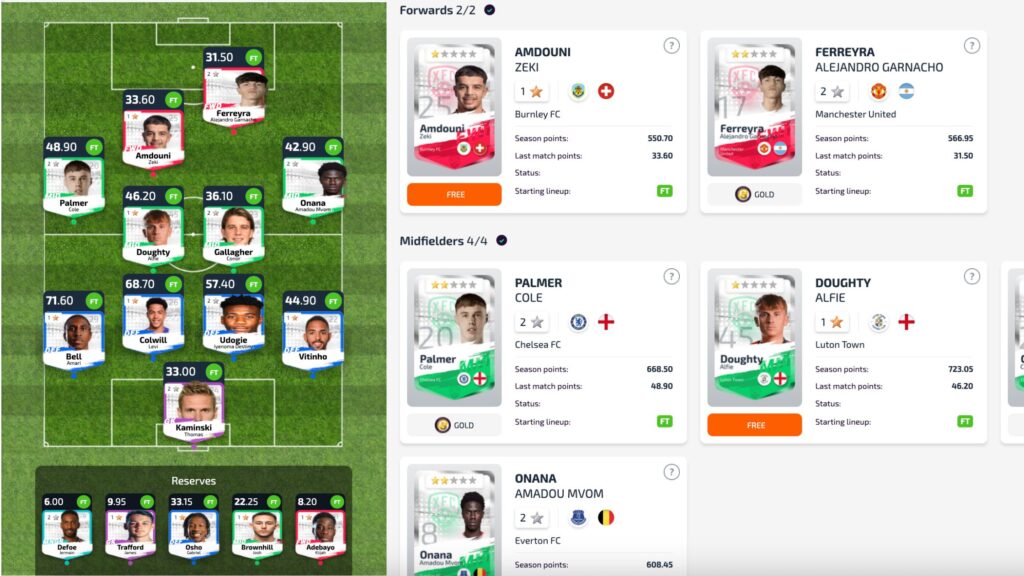
Formations and adaptability
The 3-4-2-1 formation has become synonymous with Xabi Alonso’s tactics since the start of the season. It has found many fans. And it has even been greeted by fellow managers looking to copy aspects of it.
But Bayer cannot afford to be a tactically rigid team. The team often switches to a 3-4-3 when in attack. Or, Alonso will have wingers dropping down to form a 5-2-3 or 5-4-1 during defensive plays.
Leverkusen tends to play in a mid-block, looking to build up from the back. The wingers play out near the sidelines, creating width and being involved in most positional attacks.
Once again, Leverkusen’s smart transfer business since Alonso’s arrival deserves praise. The manager has brought in valuable players that suit the team’s style. But, he has also managed to get the best out of players like Jonathan Tah, captain Lukáš Hrádecký, or Edmond Tapsoba who all had been struggling for form.
Most recently, in the 2024/25 season, Alonso has experimented with a 3-5-2 formation. This can easily be switched to the team’s more natural 3-4-2-1.
Bayer Leverkusen in defence
Bayern Leverkusen is, usually not a team that doesn’t get itself into trouble. They’re a side that has learned to absorb shocks. The performances of team captain Lukas Hradecky are partly responsible for this.
In fact, much has been made of Alonso’s man-management skills involving the Finnish goalie. Upon his arrival, many expected the Spanish manager to opt for a new recruit between the goalposts. Alonso refused and instead brought the best out of the team’s veteran keeper.
Alonso likes to play with a back three. This has been consistent throughout the 2023/24 season and consists of Tah, Tapsoba, and Odilon Kossounou. All are powerful defenders capable of putting in tackles. All of them are also good on the ball, allowing Bayer to pass out from the back.
The back three play in a narrow formation. Together with the help of the wingers, they attempt to push opponents out wide. Gaining possession is usually accompanied by quick counterattacks.
When in possession, Tapsoba will often join the midfield line. Tah and Kossounou will essentially form a two-man defence. The addition of Xhaka and Exequeil Palacios as defensive midfielders will help break down opposition attacks before they can become a problem.
Build-up play
Essentially, there are two ways in which Bayer Leverkusen ends up creating goal-scoring chances. The first is a conservative approach and involves building up from the back.
Kossounou will often walk out the ball from the defence and move it, preferably toward the extremely dynamic wingers Jeremie Frimpong and Alex Grimaldo. Both have had excellent seasons.
Next, ideally, they’ll pass to Jonas Hofman or, more likely, Florian Wirtz, a classic number 10 player. There’s a good reason why Wirtz is scouted by Europe’s elites. The attacking midfielder has the skill and imagination to create goalscoring chances out of seemingly ordinary moments of play.
Attacking structure
Xabi Alonso’s team can patiently build from the back. But they’d rather rocket the ball through a counterattack. Their attacking structure helps them to do that.
Leverkusen’s wingers offer width. However, their defenders, central midfielders and attackers play in a very narrow structure. Players will often rotate their positions in order to create a break against opposition teams forced to play just as narrowly.
For example, Boniface will often play as a false nine, while Wirtz will take on the role of attacker. Also, Frimpong, with his extraordinary dynamism, will look to find pockets of pace, usually laterally, and engage in a counterattack.
What does the future have in store for Xabi Alonso?
The football world is just beginning its fascination with Xabi Alonso as a manager at the moment. No, Bayer Leverkusen has not yet won a trophy. And, realistically, doing so will prove very difficult.
However, with all the knowledge that we have of Xabi Alonso’s playing career, as well as the numerous endorsements of him as a manager, it looks likely that the Spaniard will add to what is already a highly impressive resume.
